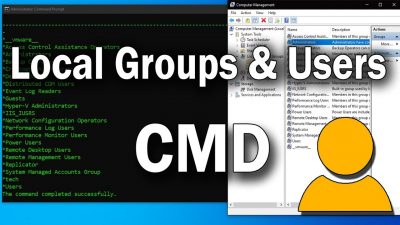Advanced User Management (lusrmgr.msc) allows you to manage all the users in your system in a single place. Disabling an account is one such functionality. The best thing is, you can disable a user account with a single checkbox.
The basic purpose of local user management is to assign rights to different users and groups on a computer. For example, the default roles include administrator, power user, standard user, guests, etc.
- open a console with “CMD” command, and type the following command : “lusrmgr“
lusrmgr
// Or
lusrmgr.msc
2. Here, click on the “Users” folder to see all the users on your system. Find the user account you want to disable and double-click on it.

3. In the Advanced Properties window, select the “Account is disabled” checkbox. Click on the “Ok” button to save changes.

As soon as you save the changes, the account is instantly disabled. In fact, you can even see a down arrow icon over the user account name/icon. That icon represents a disabled user account.

Since the user account is disabled, it will not appear on the login screen and the user cannot log into that specific account. Though the user account is disabled, the user account specific settings and files are still intact.
To enable the account, go through the steps again but uncheck the “Account is disabled” checkbox in step 3.
ps: Keep in mind that the lusrmgr.msc tool is only available to Windows Pro users. If you are using another edition, I recommand you the following method.
Alternative
Before you can disable the user account, you need to know the user name of the target account. If you already know the username, skip this step. Otherwise, execute the below command to see the usernames of all the accounts in your system.
net user
Once you know the username, use the following command while replacing <username> with the actual username you got in the previous step.
net user <username> /active:noAs soon as you execute the command, the user account will be disabled instantly. Just like with the first method, the user account will not be visible on the lock screen and the target user cannot log into their user account.
If you want to reverse the process and enable the user account then execute the below command. As you can see, the command is very similar. All we did is to replace “no” with “yes”.
net user <username> /active:yes
